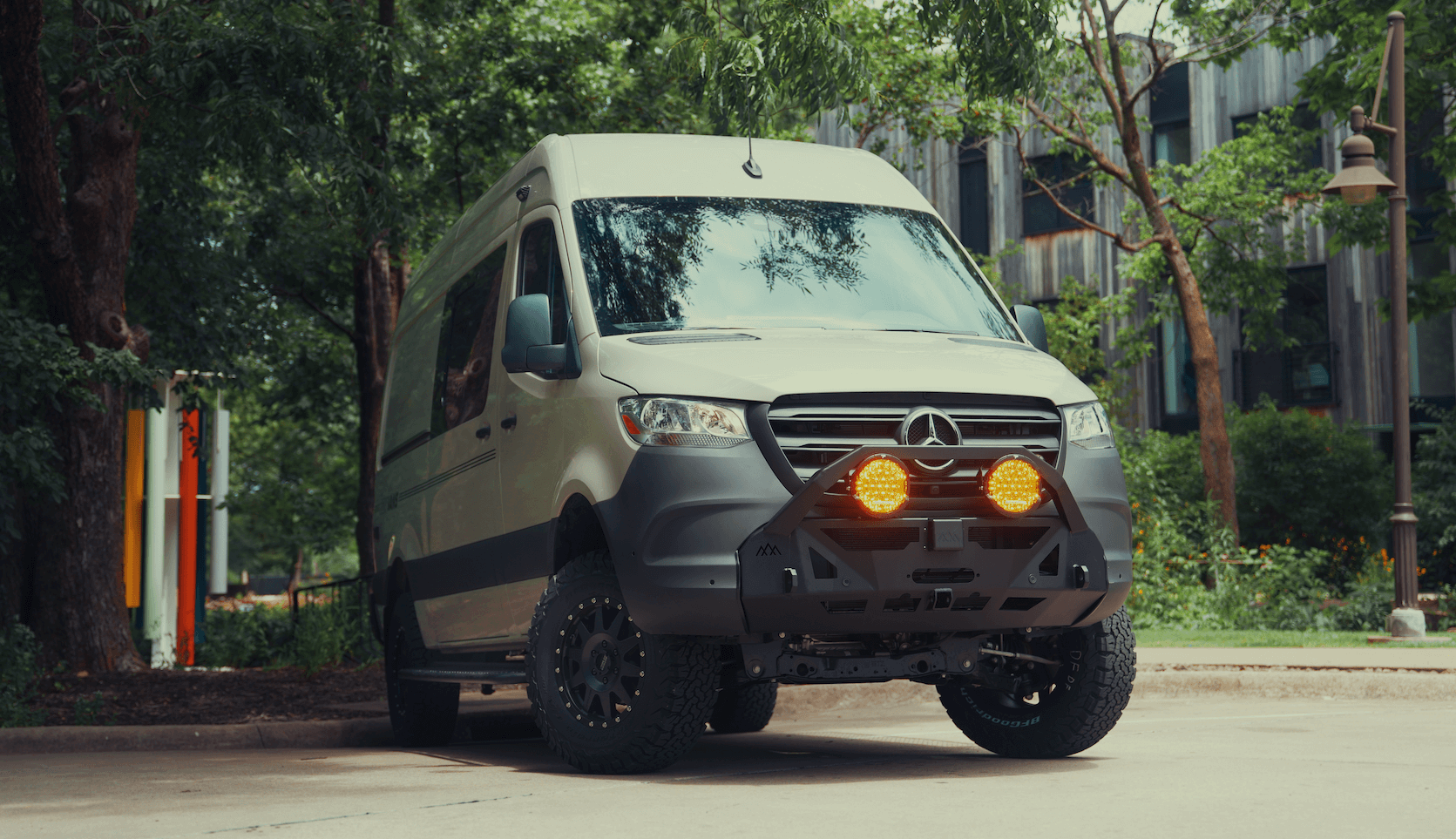Recreational Vans

Spec build inventory is a batch of vehicles assembled to a repeatable package, then held in stock for immediate or near term delivery. Instead of starting with a blank canvas, these units follow a defined spec sheet that covers the platform, core options, and common accessories. The approach is common in commercial fleets and increasingly popular in adventure vans and overland rigs because it shortens the wait and stabilizes pricing.
In practice, a spec unit balances three levers. Speed to delivery, predictable configuration, and standardized quality control. Buyers can see and touch a finished or near finished vehicle, confirm features on a single build sheet, and move quickly if the spec checks their boxes. The tradeoff is flexibility. You may not choose every surface finish or power module, but you gain time savings and often better pricing due to economies of scale.
Spec inventory falls into several buckets. In stock completed builds, near complete pipeline units with locked options, and allocation slots that convert to spec as parts are scheduled. Each bucket has different certainty levels for timelines and components. Understanding where a vehicle sits in that pipeline helps set expectations for delivery and any permitted tweaks.
Dealers and builders create spec packages around the most requested combinations. Think high roof cargo platforms with insulated interiors, a proven electrical system, ventilation, heating or cooling, and modular storage. By repeating a recipe, teams can cut waste, streamline QC, and pre arrange parts procurement, which has real value in a tight supply chain.
Pricing for spec builds typically benefits from consolidated purchasing and reduced design hours. A published price may be lower than a bespoke alternative with similar capability. That said, shoppers should compare the total build content line by line. A well priced spec may include items you would not select on your own, which can be fine if the package still delivers value and use case fit.
Timeline is a major driver. Spec inventory often advances through production faster because the design is validated and parts are forecasted. Even when chassis availability is volatile, builders can stage subassemblies and be ready to move when the platform arrives. For buyers facing a season window or an upcoming trip, that time advantage can be decisive.
There are also operational benefits. Standardized spec units simplify service documentation, training, and future parts support. Over the lifespan of a van or rig, having a repeatable architecture can reduce ownership friction. That is especially meaningful for full time travelers who depend on every system from power to water to operate consistently.
When evaluating spec build inventory, focus on capability first, then creature comforts. A clear checklist keeps you objective.
Platform and drivetrain
Electrical and energy
Thermal and ventilation
Water and galley
Storage and layout
Safety and compliance
Beyond the checklist, verify documentation. Ask for the exact spec sheet, brand and model of key components, and warranties. Look for photos from earlier units in the same package to assess real world fit and finish. A reputable builder will provide torque charts, wiring diagrams, and a delivery checklist.
Depreciation and resale deserve attention. Spec packages that mirror broad demand often retain value better than very niche layouts. Neutral color palettes, well known component brands, and clean service records all help. Demo units can be compelling values if mileage is low and the warranty start date is clear.
Finally, confirm availability in plain terms. In stock means ready for delivery after prep. Pipeline means the unit is in production with a realistic completion window. Allocation means a chassis or slot is assigned but timing could move. Each status is valid, but clarity prevents missed expectations.
Spec build inventory is a strong path when the package aligns with your travel style and timing. A custom build makes more sense when you need specialized storage, unique seating, accessibility features, or a particular electrical architecture. If your use case demands a purpose built solution, starting from a design brief ensures every inch earns its keep.
A smart way to shop is to begin with a candid needs list, compare it to available spec units, and measure the gap. If the gap is small, a spec vehicle can get you on the road sooner with predictable cost. If the gap is large, invest in a full custom process that defines layout, components, and finish down to the details. Either way, clear documentation, rigorous QC, and post delivery support are non negotiable.
If you want speed without guesswork, our team maintains current visibility on in stock and near term options and we build complete custom vans when the brief calls for it. Tell us how many nights you camp, what gear you carry, and the climates you chase. We will map the right path and deliver a rig that just works.
Explore our adventure van lineup here: Explore recreational vans. For a ground up process that starts with your use case, see this page: See custom build process. If you are searching for a platform that qualifies for financing, start here: Browse mainstream vans.
Share your timeline, budget, and must haves. We will align you with spec build inventory where it fits or craft a custom plan where it does not. Either way, you get a van built for real travel with clear documentation and support.
Tell us about your travel style and timing. We will recommend an in stock spec unit or design a custom van that meets your goals. Submit the form to start a no pressure build conversation today.
Ready to skip the wait or request a tailored build path? Tell us how you travel, and our team will match you with in stock options or map a custom van that fits your timeline and budget. Fill out the form to start your build plan.
ADDRESS:
6159 E Huntsville Rd, Fayetteville, AR 72701
PHONE:
(479) 326-9200
EMAIL:
info@ozkvans.com